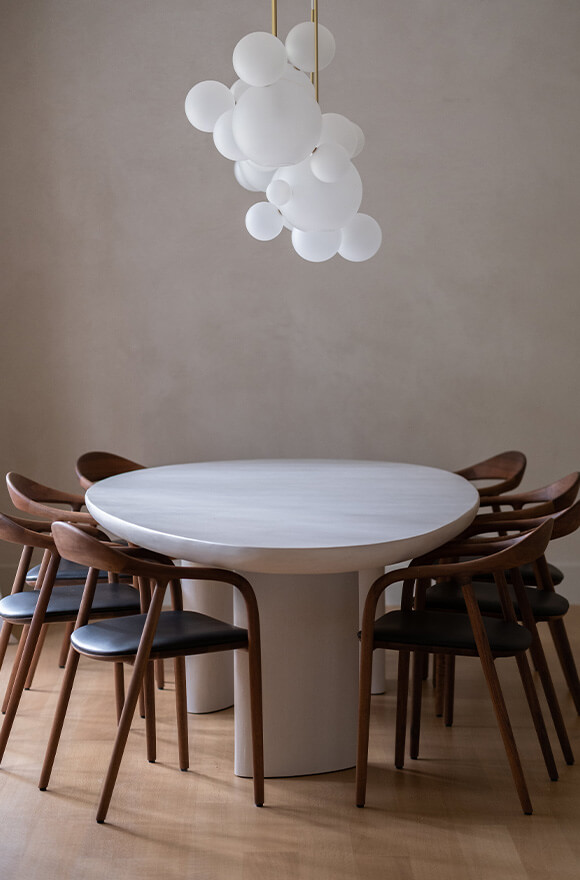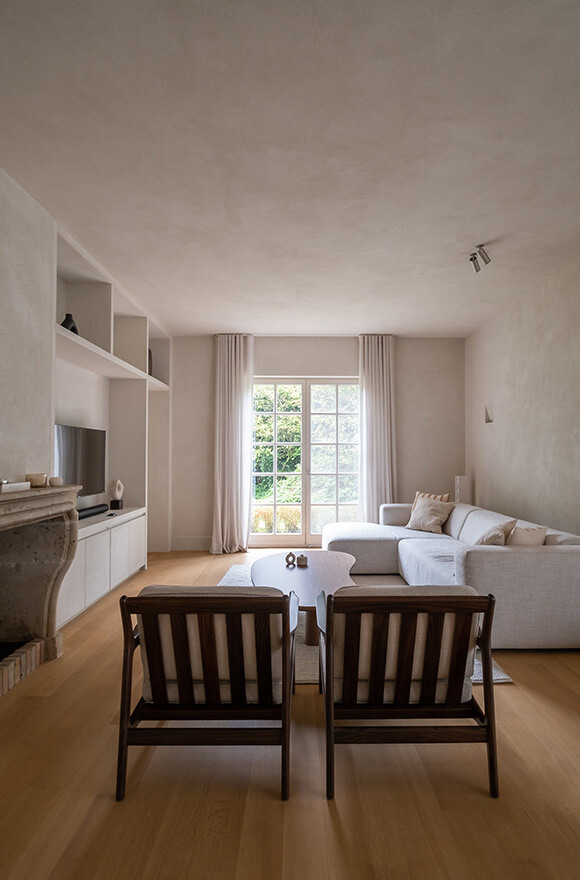Interior design is a constantly evolving field, where creativity and innovation come together to create unique and welcoming spaces. Among the many challenges designers have to face, the choice of wall materials plays a crucial role in defining the style and atmosphere of an environment. In recent years there has been a growing attention towards the use of natural materials, both to respect the environment and to create distinctive and welcoming interiors.
Clay: a natural finish
Among the natural materials that are gaining momentum in interior design is clay. Clay offers a unique combination of tradition, versatility and sustainability. With a history that reminds of antiquity, clay walls have a timeless charm, and convey authenticity and connection to the past. The flexibility of this material allows for the creation of the most diverse textures and finishes, from smooth to rustic, allowing designers to customise any space in unique ways. Clay’s ability to regulate humidity helps maintain a comfortable microclimate, promoting living comfort as well as health benefits. In terms of sustainability, the abundance and accessibility of clay reduces environmental impact, while its recyclability makes it an eco-friendly choice. With their natural, earthy tones, clay walls provide a warm and welcoming atmosphere that blends perfectly with a variety of decor styles.
Cork: versatile and eco-friendly
Cork is a surprisingly versatile and sustainable material that is gaining popularity in interior design. In addition to its acoustic and thermal insulating properties, cork is lightweight, durable and easy to work with. Cork walls not only add a natural and warm touch to interiors, but are also an eco-friendly option, as the bark of cork trees can be removed without damaging the tree.
Natural stone: a timeless elegance
Natural stone is a timeless classic in interior design. Marble, granite and slate are just some of the options available. Stone walls not convey give an elegant and sophisticated look, but also a sense of solidity and durability. These natural materials resist the passage of time, which makes them a durable investment for interior restyling.

Hemp fibre: eco-sustainability and resistance
Hemp fibre, a natural material derived from the hemp plant, is rapidly gaining popularity in the world of interior design.
Known for its exceptional eco-sustainable properties, hemp fibre is an ideal choice for those looking for materials with a low environmental impact. Growing hemp requires few pesticides and is not water-intensive, making it a sustainable option. Walls made with hemp fibre elements not only contribute to reducing environmental impact, but also provide notable resistance, ensuring durability over time.
Cocciopesto: ancient art in modern design
Cocciopesto, a material obtained from the mixture of ceramic fragments, lime mortar and marble dust, is a true expression of ancient Italian art transferred into modern design. This material has deep roots in the history of Italian architecture, dating back to Roman times.
Walls with cocciopesto elements convey a sense of history and tradition, and add a touch of timeless elegance to the interior. The versatility of cocciopesto translates into a wide range of finishes, which allow designers to create unique and custom-made effects. Furthermore, the very composition of cocciopesto makes the walls resistant to wear and easy to clean, which makes cocciopesto a practical solution for restyling, too.
Natural Fibre Weaves: artisanal refinement
Natural fibres, such as rattan and bamboo, are emerging as distinctive materials for interior walls. The use of artisanal weaves adds a touch of refinement and warmth to any space. These materials are lightweight, flexible and, when woven into intricate patterns, create a truly unique visual effect. Furthermore, they highlight the importance of craftsmanship and sustainable production.
Terracotta: warm, earthy tones
Warm, earthy tones of materials such as terracotta are becoming increasingly popular in interior wall choices. Terracotta, in particular, brings to any environment a sense of tradition and authenticity. Terracotta walls, with their natural look, create a welcoming and relaxing atmosphere.
Wood: elegance and sustainability
Wood has long been a key element in interior design. Recently, there has been a revival of this material due to growing environmental awareness. The use of wood from sustainably managed forests has become a standard for those seeking to create eco-friendly environments. However, the novelty lies in the use of recycled wood or wood that has been recovered from old buildings and structures, which makes wooden walls and elements all the more unique.

A new chapter in interior design
The restyling of interiors through the use of natural materials for the walls not only responds to the growing environmental awareness, but also to the search for a distinctive and welcoming style. Clay, lime, natural stone, natural fibres and other materials offer a range of options for expressing the personality of a space through its structure. In a world where sustainability and originality are increasingly appreciated, the use of natural materials represents a step forward towards a more conscious and rewarding approach to interior design.